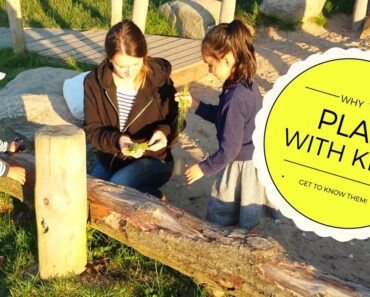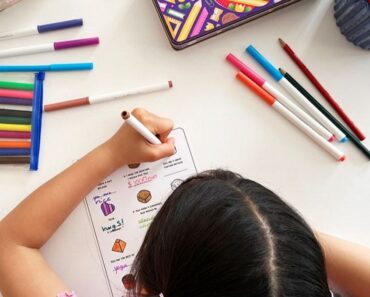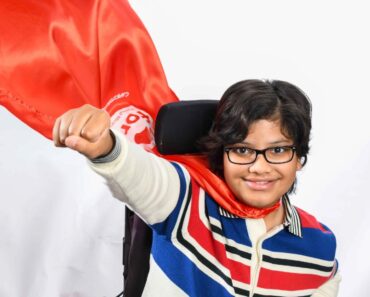Children and youth have unwittingly become hot potatoes in one of the most pressing issues our society now faces regarding coronavirus: whether and how schools will reopen in September.
Ontario is expected to make an announcement this week confirming details about its approach to reopening schools, with British Columbia’s announcement expected on Wednesday.
Some parents in desperate need of respite are urging a full-time and in-person return of students. They point to the devastating economic consequences of having a large proportion of workers hamstrung by child care.
The evidence is compelling: A recent study from RBC found women are participating in the workforce at the lowest levels in three decades.
In the other camp, politicians, unions and school administrators have warned of the potential health risks that a full-time reopening would pose to staff and students.
But children and youth aren’t hot potatoes, they’re human beings with rights. As a member of the Inter-disciplinary Research Laboratory on the Rights of the Child at the University of Ottawa, I believe that we can depoliticize the back-to-school debate by reframing it with the rights of children and youth at its centre.
But does this mean that children and youth have the right to return to full-time, in-person instruction in September?
Legal obligation
Governments now face difficult decisions that involve the delicate balance of public health and economic sustainability. At the same time, all decisions must comply with international human rights law, given the fact that Canada is one of the 193 states that ratified the Convention on the Rights of Children (CRC).
This means offering quality education to our children is a legal obligation. If governments want to lessen the quality of education provided to children and youth, they must first prove that they’ve given careful consideration of all alternatives and provided the maximum available resources to avoid violating the rights of children and youth.
In this regard, #SchoolsNotBars is more than a catchy hashtag trending on social media. It accurately describes the policy choices that must be made in order to limit community viral transmissions so that we can respect the human rights of children and youth to a quality education.
One week and bars in Toronto will likely be permitted to reopen? Please, please rethink this until we can get kids safely back to school. #schoolsnotbars #COVID19Ontario https://t.co/iYIRljIU8v
— Erin (@ebobkin) July 20, 2020
Child- and youth-centred approach
The Convention on the Rights of Children is the most widely ratified human rights document globally and it represents a watershed change in how children and youth are regarded. It acknowledges them as full-fledged human beings and rights bearers, and moves away from seeing them as passive recipients of adult actions.
An overarching obligation of states under the convention is to give primary consideration to the best interests of children and youth in all matters concerning them. Canada’s ratification of it means that all levels of governments must ensure that their decisions and actions comply with the convention.
The best interests of children and youth appear not to be been fully considered in some pandemic policies.
For instance, Stage 2 of Ontario’s reopening plan allowed for adult-specific indulgences such as drinks on patios and nail salons.
But while these openings meant adults could drink and get manicures, “playgrounds [and] play structures” were slated to “remain closed,” despite the low-risk activities associated with them. The rights of children and youth to play, guaranteed by the convention and vital to their development, continued to be violated.
Rights-based decisions
The right to education is guaranteed by the Convention on the Rights of Children and is intrinsically linked with the best interests of children and youth. As observed by the Committee on Economic, Social and Cultural Rights, education is both a human right in itself and an indispensable means of realizing other human rights.
Children have a right to an education that develops their full potential, including their respect for human rights, their sense of identity and affiliation and socialization, in an environment that prepares them for all aspects of life.
Schools are where children and youth go to have a wide range of their rights fulfilled. These include the right to be protected from violence, the right to receive information, the right to play, the right to access social support and to exercise their freedom of thought and assembly.
While we are rightly called to account for historic and present systemic problems with schools as sites of injustice, discrimination or abuse, schools can also be sanctuaries for marginalized or vulnerable children and youth.
For example, children and youth with disabilities rely on schools to access technologies that will help them overcome communication barriers. Gay-Straight Alliances provide safety and confidentiality for LGBTQ2 students to affirm or educate themselves about sexual orientation, sexual identity, gender identity and gender expression.
Schools can also help counter linguistic and cultural assimilation in Canada’s official language minority communities.
We’re preparing for the safe start of school & ensuring our plan prioritizes the well-being of students, staff & families.
Grateful to @Sickkidsnews & Dr.@ronald_cohn for leading an important collaboration w/ other Ontario hospitals recommending safety measures for our schools. pic.twitter.com/yfANEvuYSJ
— Stephen Lecce (@Sflecce) July 28, 2020
Must prove all alternatives considered
Under international human rights law, the scaling back of the quality of the education provided to children and youth ought to be avoided. It is permitted in only in very limited circumstances. Educational experts have argued that online and part-time education is insufficient, inadequate and inequitable compared to safe, full-time, in-person instruction.
If governments want to lessen the quality of education provided, they must first prove they’ve given careful consideration to all alternatives and provided the maximum available resources to avoid violating the rights of children and youth.
The government must canvass all other physical locations available to hold in-person instruction to guarantee small class sizes and comply with physical distancing policies if the current infrastructure is lacking.
Accommodation plans must be made for students and teachers who are immunocompromised.
Measures must also be taken so that schools can open safely while respecting the rights of students and teachers to enjoy the highest attainable standard of health. This means that the return-to-school plan must involve efforts to limit community transmission.
A preliminary budget prepared by the Toronto District School Board shows that financial costs associated with implementing the required public health guidelines would be steep.
If it is truly unsafe
If returning to in-person instruction is truly impossible for public health reasons after considering all of these options, training and support must be provided to teachers to create and deliver quality distance education to children and youth that is adapted to their needs and accessible to those with various needs and circumstances. Developing curricula in a haphazard manner isn’t acceptable.
It’s not unusual that respecting human rights involves considerable financial expenses and complex logistical hurdles.
The right to vote, for example, requires the creation of 20,000 polling stations and the hiring of more than 233,000 people to tend to them.
Adults must now make similar large-scale efforts and financial expenditures in order to respect the rights of our children and youth to a quality and safe education in September.![]()
Anne Levesque is an assistant professor in the faculty of law at the University of Ottawa.
This article is republished from The Conversation under a Creative Commons license. Read the original article.

































